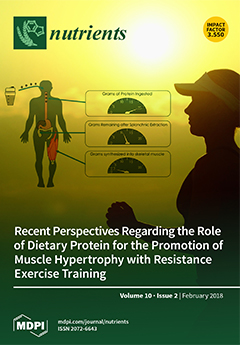With obesity being a leading cause of preventable death, it is vital to understand how best to identify individuals with greater risk of metabolic disease, especially those with high visceral adipose tissue (VAT). This study aimed to determine whether three commonly used waist
[...] Read more.
With obesity being a leading cause of preventable death, it is vital to understand how best to identify individuals with greater risk of metabolic disease, especially those with high visceral adipose tissue (VAT). This study aimed to determine whether three commonly used waist circumference (WC) measurement sites could provide accurate estimations of VAT, as determined by magnetic resonance imaging (MRI), which is a gold standard for measuring VAT, in postmenopausal women with obesity. VAT volume was measured by MRI of the total abdomen in 97 women aged 57.7 ± 0.4 years (mean ± SEM), mean body mass index 34.5 ± 0.2 kg/m
2. WC was measured at the midpoint between the lowest rib and the iliac crest (WC
mid), the narrowest point of the torso (WC
narrow), and at the level of the umbilicus (WC
umbilicus). WC differed significantly according to measurement site, with WC
narrow (102.1 ± 0.7 cm) < WC
mid (108.3 ± 0.7 cm) < WC
umbilicus (115.7 ± 0.8 cm) (
p < 0.001). WC
mid, WC
narrow and WC
umbilicus were all significantly correlated with VAT, as measured by MRI (
r = 0.581, 0.563 and 0.390, respectively;
p < 0.001 for all), but the relationships between WC
mid or WC
narrow and VAT determined by MRI were stronger than for WC
umbilicus. Measurement of either WC
mid or WC
narrow provides valid estimates of VAT in postmenopausal women with obesity, with WC
narrow being favoured in light of its greater ease and speed of measurement in this population.
Full article






